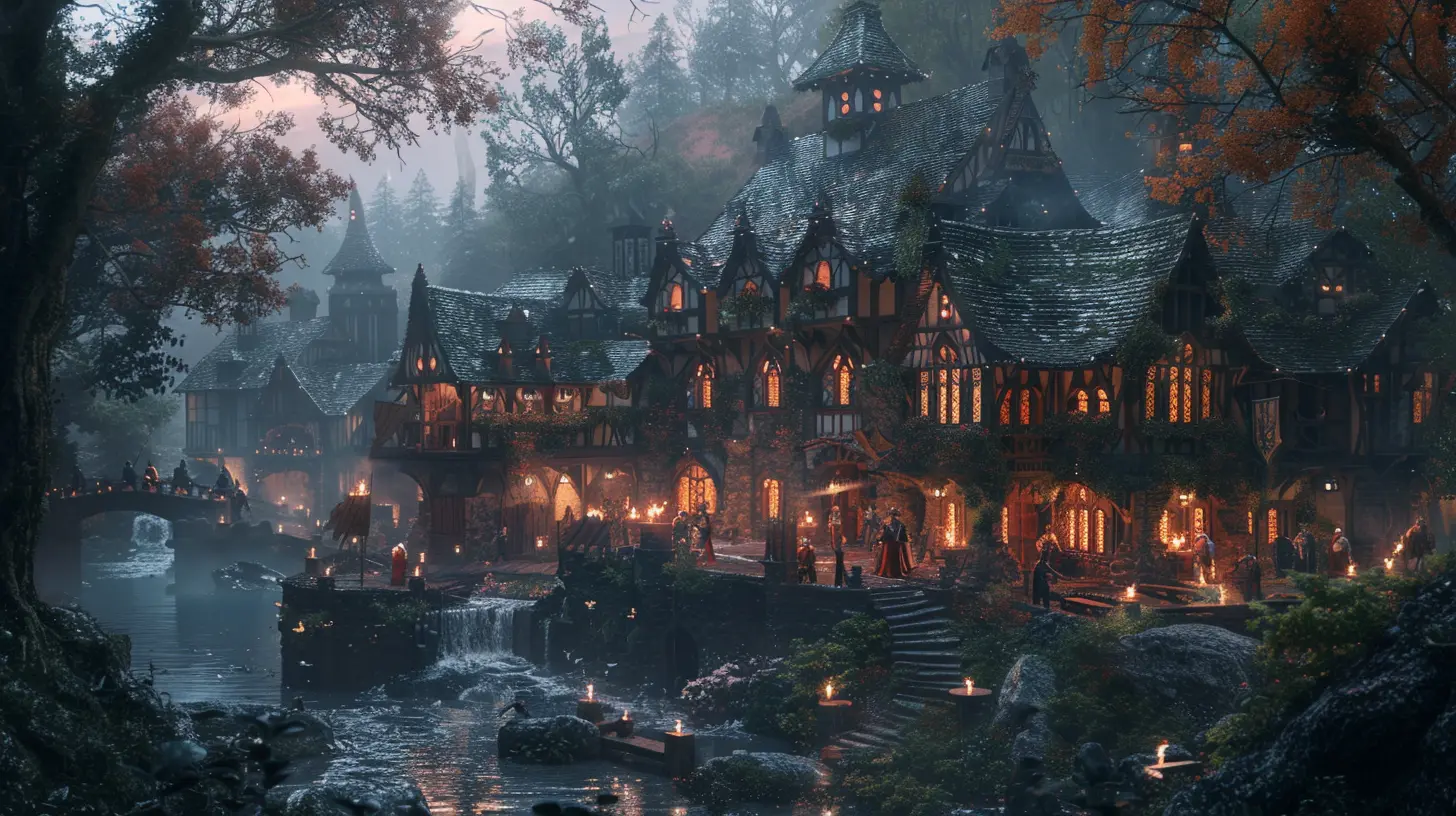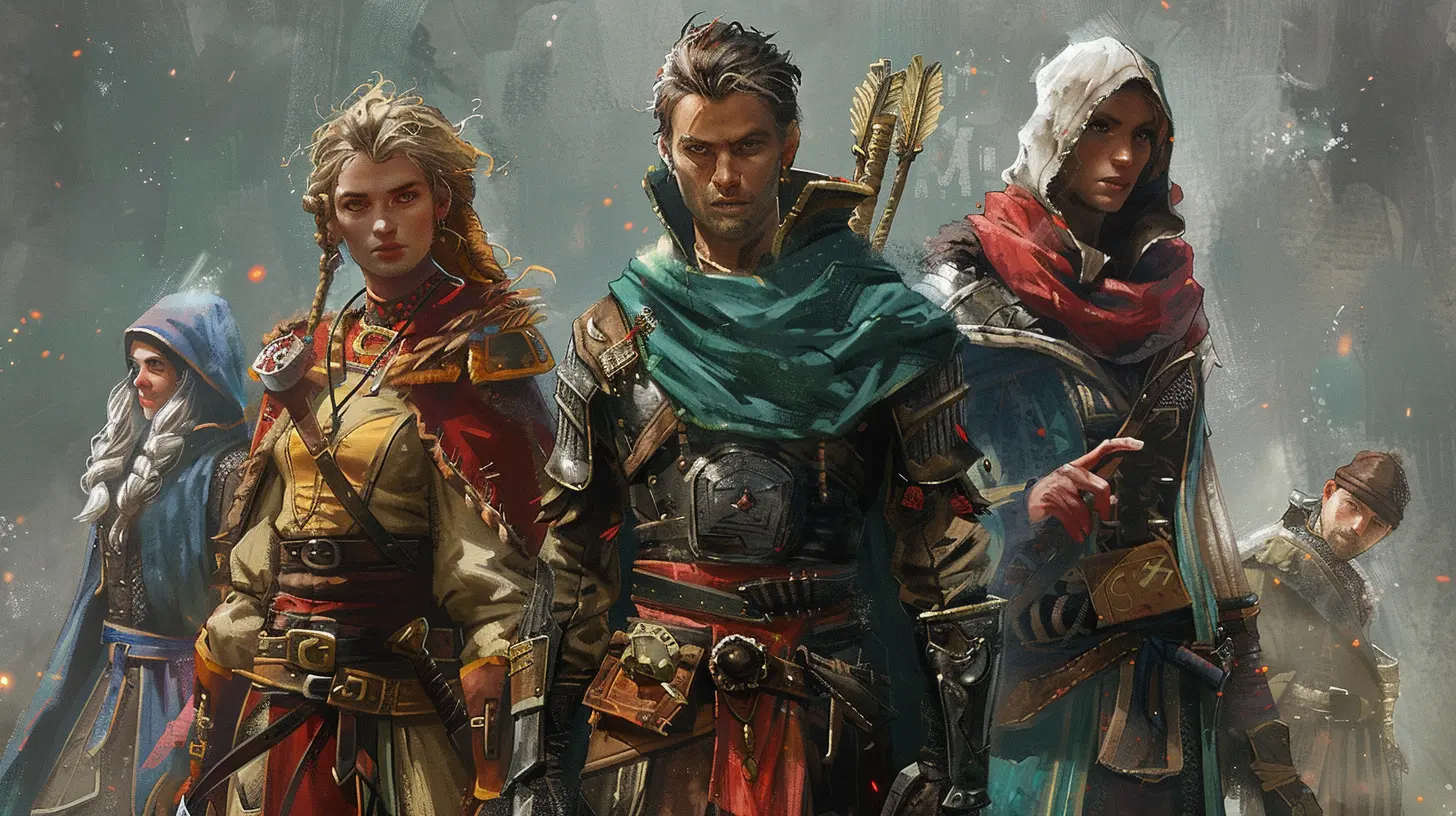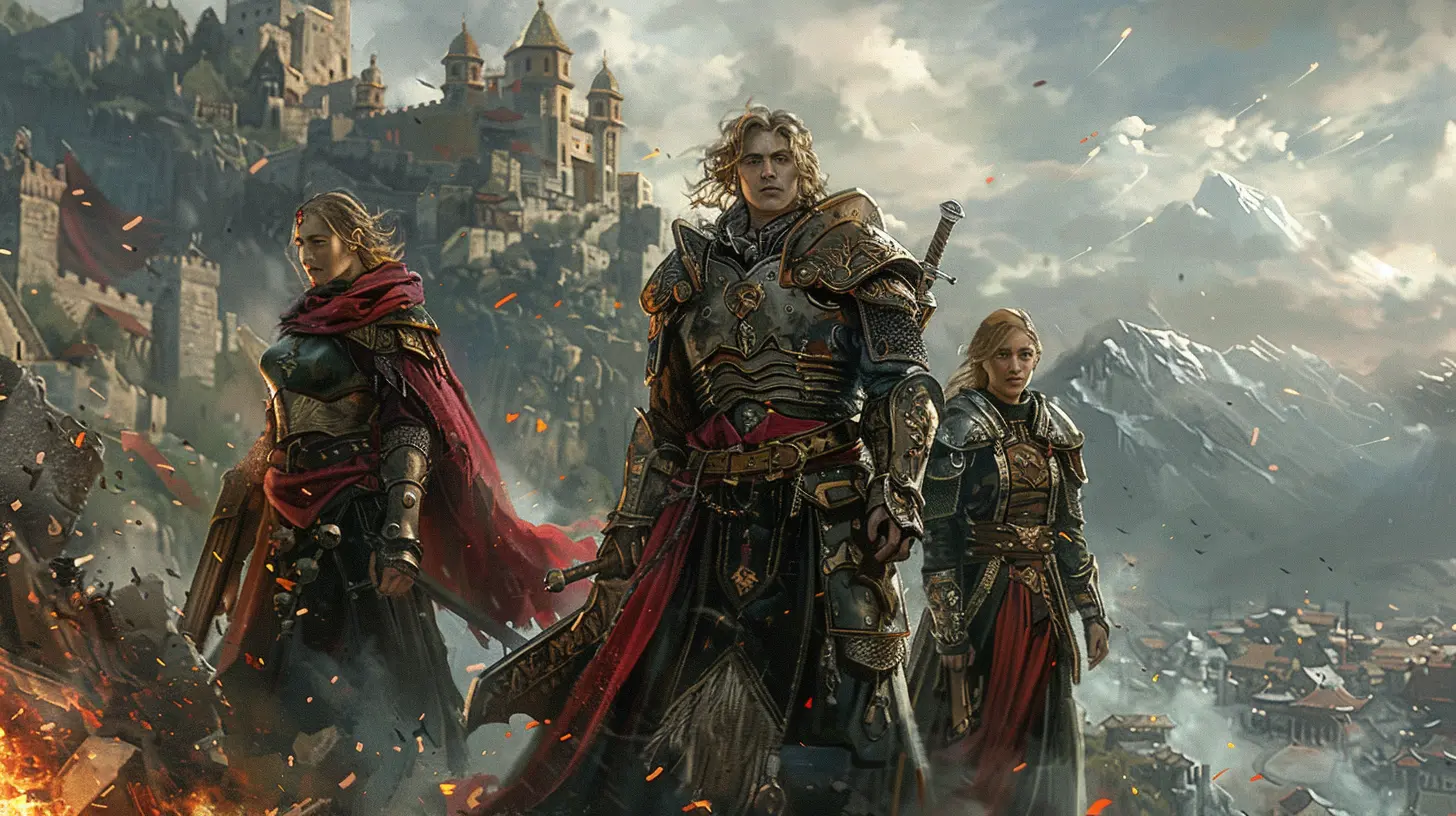The Art of Creating Roleplay-Friendly Builds
25 August 2025
Whether you're exploring Tamriel in Elder Scrolls, navigating the expansive realms of Dungeons & Dragons, or modding your way through Minecraft, one thing remains true: building a character that feels authentic can elevate your roleplaying experience from average to absolutely unforgettable.
Anyone can slap together a build that min-maxes stats and wrecks shop in combat. But crafting a roleplay-friendly build — one that has depth, personality, and purpose — is a whole different level of creativity.
So, let’s dive into what really goes into the art of creating a roleplay-friendly build. Grab a drink, get comfy, and let’s chat about giving your character a soul (not literally... unless you're a necromancer).
What Makes a Build "Roleplay-Friendly"?
Alright, first things first. What exactly do we mean by a roleplay-friendly build?Put simply, it's a character build that goes beyond numbers and mechanics. It’s tailored not just to a class or race but to a story, a background, a purpose. It considers motivations, quirks, and even fashion choices. Your stats support your story — not the other way around.
Think of it like casting an actor in a movie. You wouldn’t cast someone who looks like a barbarian to play a cunning court jester without a compelling backstory, right?
Why Bother With Roleplay When You Can Just Min-Max?
Great question. Here's the thing — if you're only in it for the numbers, you miss out on so much richness.Roleplaying adds flavor. It turns repetitive clicks into meaningful actions. When you care about your character, every decision matters. You're not just choosing a sword — you're picking the heirloom your father passed down right before that tragic goblin ambush.
Adding roleplay to your build makes you:
- More immersed in your world
- More creative with in-game decisions
- Way cooler to party with (no one likes a bland murder machine)
Step One: Define The Backstory First
Don't start with class. Don’t even start with stats. Start with a story. Let your imagination go wild.Ask yourself:
- Who is this person?
- Where did they grow up?
- What was their life like before this journey?
- What motivates them?
- What are their fears, dreams, regrets?
Let’s say you're creating a cleric. Instead of just choosing domains for power, maybe your cleric is a former soldier who turned to healing after witnessing too much bloodshed. Suddenly, your spell choice has emotional weight. Your fear of battle isn’t just tactical — it’s personal.
> Bonus tip: Write a journal entry or a letter from your character’s point of view. It helps flesh them out!
Step Two: Sync Mechanics With Personality
Now that you have a backstory, start aligning your mechanical choices (race, class, skills, feats, spells, etc.) with that personal narrative.Think about it like this: would a noble-turned-wizard really pick up thievery for no reason? Probably not — unless there’s a juicy story arc about rebellion or desperation. (And if there is? Even better!)
Match key components like:
- Race: How does the race influence your culture, beliefs, and strengths?
- Class: Why did your character choose this path? Was it forced on them, or their passion?
- Skills: What did they naturally learn growing up?
- Equipment: Don't just pick the best gear — what feels right for your character?
Step Three: Embrace Flaws and Quirks
No one likes a perfect protagonist. We love characters that are complex, contradictory, maybe even a little broken.You can:
- Give them a fear of magic despite being a sorcerer
- Roleplay a knight with a stutter and stage fright
- Create a thief who donates half their loot to orphanages
These kinds of choices don’t always make sense in a meta-gaming way — but they make for phenomenal storytelling.
And here's the kicker: sometimes the best moments happen because a character flaw got in the way of the “optimal” choice. That’s where the magic happens.
Step Four: Aesthetic Matters (Yes, Fashion Is Important)
Let’s not lie — visuals help bring everything to life.Pick armor, clothes, and weapons that actually fit your character’s vibe. A peasant-turned-hero might wear mismatched scavenged gear — because it’s all they could afford. A noble paladin? Gleaming armor and a family crest might be non-negotiable.
Don’t just grab the sparkliest item with the best stats. Ask yourself:
- Would your character wear this?
- Does it reflect their status, past, and personality?
- Could it be a plot point?
Fashion is storytelling, too. And come on — looking cool is half the fun.
Step Five: Think In Terms of Relationships
Roleplay doesn’t exist in a vacuum. Your build should consider how your character interacts with others.- Are they suspicious loners or natural leaders?
- Do they respect authority or rebel against it?
- Do they have a rival or lost love that could appear later in the campaign?
Having a clear interpersonal framework enriches roleplay with party members or NPCs. It also explains why they make certain choices. Maybe that grizzled ranger never enters cities because of a betrayal in their past. That’s juicy.
Step Six: Map Out Personal Goals (Not Just Quests)
Okay, so your party’s off to slay the dragon and save the realm. Cool. But what does your character want?Personal goals are like side quests for the soul. They give depth and direction. It could be anything like:
- Recovering a lost family heirloom
- Redeeming themselves after a betrayal
- Proving themselves worthy in the eyes of a deity
When you have personal ambitions running alongside the main plot, your roleplay becomes layered. You're not just reacting — you're evolving.
Step Seven: Leave Room for Growth
Here’s a secret — your character should not be fully formed at level 1. Growth is part of the journey.Let your build evolve with the story. Did your fighter discover a love for magic during a quest? Maybe they begin multiclassing into wizard. Did your rogue experience a life-changing event? Perhaps they renounce crime and become a monk.
Incorporate these changes not just into your mechanics, but into how you roleplay. Growth keeps things fresh and believable.
A Quick Word on Homebrew and Mods
Want full creative control? Then don’t shy away from homebrews or mods. Especially in sandbox games like Skyrim, Fallout, or Minecraft, mods can breathe unique life into your characters.Maybe you want a custom class. Maybe you want to build a haunted tavern to host your ghost-hunting bard. Go for it. Use every tool available to paint your masterpiece.
Just make sure you’re using mods that enhance immersion and don’t break the flow. Immersion > power-ups, every time.
Player Tips: How to Roleplay Without Being "That Guy"
You know the one — the guy who won’t stop quoting lore in the middle of combat, or who derails every party decision for the sake of their “edgy backstory.”Here’s how to roleplay in a way that supports the group:
- Stay in character, but stay involved with the group’s objective.
- Keep monologues short and meaningful.
- Ask other players about their characters.
- Use internal motivations to support party goals, not fight them.
Remember, this is collaborative storytelling. Everyone should shine.
DM/GM Tips: Encourage Roleplay-Friendly Builds
If you’re running a campaign, help your players build these kinds of characters by:- Asking for backstories early on
- Giving personal moments and side quests tailored to their goals
- Rewarding creative roleplay, not just good rolls
- Creating NPCs with ties to player pasts
It’s amazing how much depth you’ll unlock when players feel like their backstories matter.
Example Archetypes to Spark Ideas
Need a jumpstart? Here are a few archetypes built for roleplay greatness:- The Exiled Noble — A fighter trained in the finest schools, now penniless and seeking redemption.
- The Reluctant Healer — A cleric who hates violence and only joined to stop someone they love from dying.
- The Reformed Thief — A rogue who now uses their skills to spy for a city’s resistance movement.
- The Warlock with Regret — Bound to a patron they didn’t understand, now trying to undo a dangerous pact.
- The Scholar Turned Sorcerer — Discovered a magical bloodline during a quiet librarian’s job.
Each one has story threads you can tug on throughout a campaign. Tweak them, twist them, make them your own.
Final Thoughts: It's About Telling a Great Story
At the end of the day, a roleplay-friendly build isn't about being the strongest or flashiest. It's about immersion. It’s about crafting someone who feels real in a world of fantasy.Whether you're planning for a D&D campaign or fleshing out a modded Skyrim run, remember: the best characters aren’t always the ones who hit the hardest — they’re the ones who live the most.
So take your time. Get creative. Ask yourself what makes your character them. Because once you’ve built someone you care about?
That’s when the real adventure begins.
all images in this post were generated using AI tools
Category:
Character BuildsAuthor:

Francesca West
Discussion
rate this article
1 comments
Rose McGowan
Great article! Your insights on crafting roleplay-friendly builds are inspiring and will enhance our gaming experiences. Thank you!
September 1, 2025 at 2:59 AM

Francesca West
Thank you so much! I'm glad you found the insights helpful. Happy gaming!


